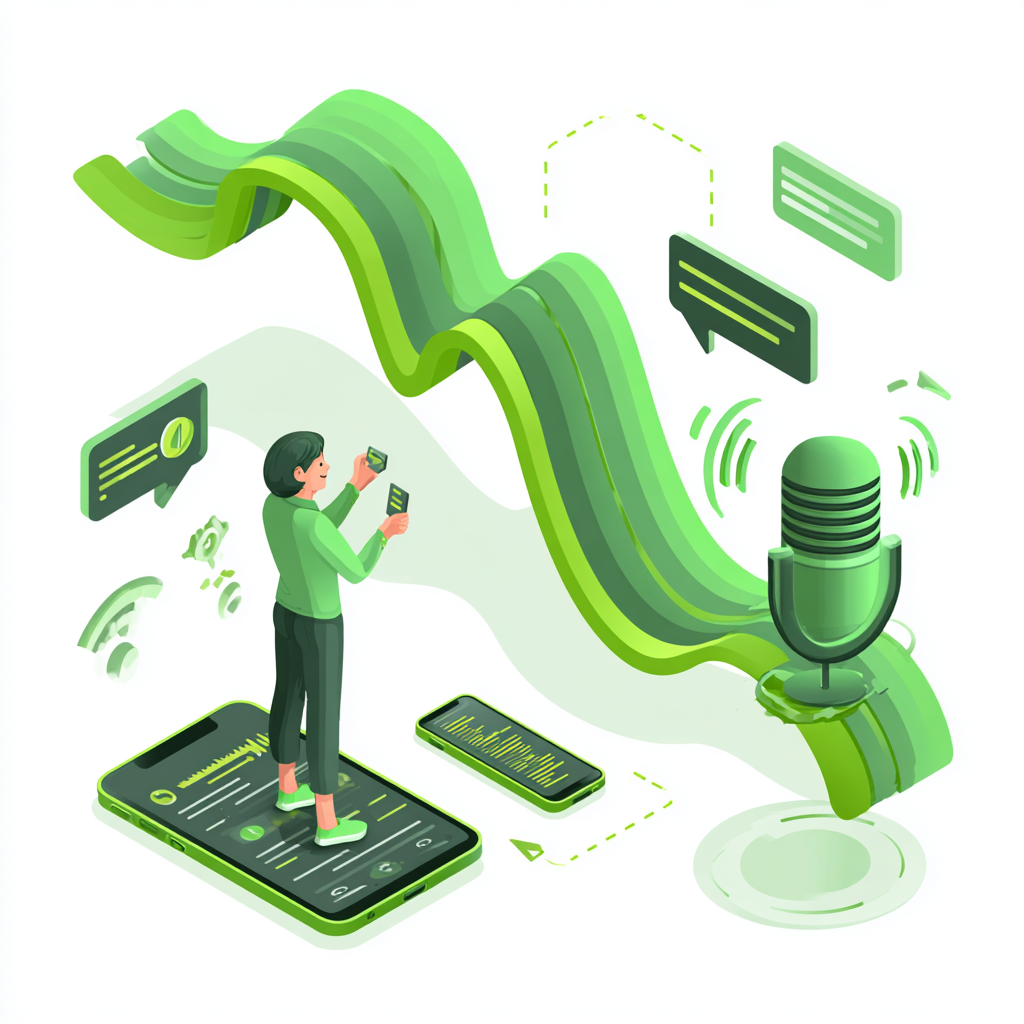Businesses in the digital space should provide a seamless experience across multiple touchpoints to keep customers engaged. An omnichannel customer experience ensures customers can switch between online, mobile, and in-store interactions without disruption.
This article will discuss ten (10) examples of omnichannel customer experience to enhance customer satisfaction and loyalty.
The foundations of an omnichannel customer experience
A successful omnichannel strategy is built on key elements, including consistency, personalization, and seamless integration.
These elements ensure that customers receive a cohesive experience, no matter how they interact with a brand, whether through a website, mobile app, physical store, social media, or customer service.
- Consistency: Customers expect a unified brand experience across all touchpoints. This means that pricing, messaging, branding, and service quality should remain consistent, ensuring trust and reliability. A lack of consistency can lead to customer frustration and ultimately result in customer churn.
- Personalization: Modern customers value experiences tailored to their preferences and behaviors. By analyzing customer data, businesses can deliver personalized product recommendations, targeted promotions, and relevant content tailored to each individual’s needs. Personalization enhances engagement and fosters long-term relationships.
- Seamless Integration: Customers often switch between multiple channels before making a purchase. An integrated system ensures that their journey remains smooth, allowing them to browse on a mobile device, continue on a desktop, and complete in-store transactions without disruptions. This requires strong backend connectivity between e-commerce platforms, CRM systems, and customer support tools.
To achieve an omnichannel experience, businesses must leverage data analytics, AI, and cloud technology. Data analytics helps brands understand customer behavior, while AI enables the delivery of real-time recommendations and automation.
Cloud technology ensures accessibility and scalability, allowing businesses to provide a seamless experience regardless of location or device.
By focusing on these foundational elements, businesses can create an omnichannel experience that boosts customer satisfaction, strengthens brand loyalty, and drives long-term growth.
Ten (10) examples of omnichannel customer experience
Here are ten (10) brands successfully implementing omnichannel strategies to enhance customer satisfaction and loyalty.
Starbucks
Starbucks has revolutionized the customer experience with its Starbucks Rewards app. Customers can order coffee through the app, earn points for future purchases, and pick up their drinks in-store.
The app integrates in-store purchases, online payments, and even voice ordering through Amazon Alexa, ensuring a seamless experience.
Additionally, customers can reload their Starbucks cards through multiple channels: mobile, website, or in-store, while their balance updates in real-time, reinforcing the convenience of a truly interconnected experience.
Sephora
Sephora’s omnichannel approach bridges online shopping with in-store experiences. Customers can use the Sephora app to check product availability, receive personalized beauty recommendations, and even try makeup virtually.
In-store beauty advisors can access customer profiles to provide personalized product suggestions, making the shopping experience more convenient and tailored.
The Beauty Insider program also links customer data across all platforms, ensuring a seamless transition from browsing online to purchasing in-store and providing loyalty members with exclusive offers tailored to their preferences.
Nike
Nike connects its website, mobile app, and retail stores to offer a unified shopping experience. Customers can check product availability in real-time, reserve items online for in-store pickup, and utilize the Nike app for exclusive in-store features, including scanning barcodes for product details.
This interconnected system enables a seamless shopping experience. The Nike membership program also integrates across all channels, offering personalized recommendations, early access to new products, and rewards that encourage long-term customer engagement.
Amazon
Amazon’s omnichannel strategy is evident in its Amazon Go stores, where customers can walk in, pick up products, and leave without going through a checkout process.
Their purchases automatically sync with their Amazon account, making the shopping experience effortless. Beyond its Go stores, Amazon’s Alexa-powered shopping, Amazon Prime membership benefits, and Whole Foods Market integration ensure customers can shop seamlessly across digital and physical environments, all while receiving personalized product recommendations and fast delivery options.
Disney
Disney offers a frictionless experience through its My Disney Experience app. Visitors can book hotel stays, reserve dining, check ride wait times, and even unlock their hotel rooms using a MagicBand.
This integration ensures guests enjoy a hassle-free and immersive experience across multiple touchpoints. Additionally, Disney+ enhances the brand’s omnichannel reach by allowing customers to stream content, receive personalized recommendations, and stay engaged with Disney’s ecosystem, further strengthening customer loyalty beyond theme parks.
Apple
Apple creates a seamless transition between online and in-store shopping. Customers can research products online, book in-store appointments, and receive personalized recommendations based on browsing history.
Apple Store employees can access online order details, ensuring a smooth and efficient customer experience. Apple also enhances its omnichannel strategy through iCloud, allowing users to sync data across devices.
At the same time, Apple Support ensures customers can get help through multiple channels, including chat, phone, and in-store Genius Bar appointments.
H&M
H&M integrates online and offline shopping by allowing customers to check product availability in local stores through their app.
They can also return online purchases in physical stores and receive personalized fashion recommendations based on their browsing habits.
The brand further enhances its omnichannel experience with a “Scan & Find” feature, which allows customers to scan an item in-store to check if different sizes or colors are available online, thereby reducing frustration and increasing purchasing opportunities.
Zappos
Zappos provides excellent omnichannel customer support through phone, email, live chat, and social media. Their hassle-free return policy and seamless interactions across channels ensure customer satisfaction and brand loyalty.
Zappos’s famous 365-day return policy, with its 24/7 customer service and no-hassle refunds, sets it apart as a leader in customer-centric omnichannel retailing, ensuring that customers always feel valued and supported.
IKEA
IKEA enhances the shopping experience with its mobile app, which lets customers visualize furniture in their homes using augmented reality.
They can purchase online, pick up items in-store, or opt for home delivery. This flexibility ensures that customers can interact with the brand in the most effective way.
IKEA also incorporates self-service kiosks in-store, a click-and-collect option, and AI-powered customer support to ensure shoppers receive guidance and assistance at every stage of their buying journey.
Best Buy
Best Buy connects its website and physical stores by offering a “Reserve Online, Pick Up in Store” feature. Additionally, its virtual tech support services enable customers to receive expert advice without needing to visit a store.
Best Buy also offers a price-matching policy across all channels, ensuring that customers receive the best deals, whether in-store, online, or via mobile.
By integrating customer purchase history across platforms, Best Buy’s support teams can provide personalized recommendations and technical assistance, strengthening its commitment to an omnichannel approach.
These brands succeed in omnichannel strategies by prioritizing seamless integration, personalization, and customer convenience. By leveraging technology, they create frictionless experiences that strengthen customer loyalty and drive business growth.
What else do these examples of omnichannel customer experience have in common?
These examples of omnichannel customer experience also share key traits that contribute to their success.
- Proactive customer support: Leading brands ensure that customers receive timely assistance through multiple channels, including AI-powered chatbots, live customer service agents, and self-service portals. This reduces frustration and enhances the overall customer experience by providing instant solutions to queries.
- Real-time synchronization: A seamless omnichannel experience means customer interactions are updated across all platforms in real-time. For example, if a customer adds an item to their cart on a mobile app, the same cart should be accessible from their desktop or in-store. Similarly, customer service inquiries via social media should be reflected in email or phone interactions, ensuring continuity and convenience.
- Omnichannel loyalty programs: Many successful brands integrate customer rewards and incentives online and offline. This means customers can earn and redeem points whether they shop in-store, on an e-commerce platform, or via a mobile app. A well-connected loyalty program enhances retention and encourages repeat purchases.
- Mobile-first approach: Given the increasing reliance on smartphones for shopping, communication, and engagement, these brands prioritize mobile-friendly experiences. This includes responsive websites, user-friendly apps, and mobile-optimized customer support, ensuring customers can interact effortlessly with the brand on their preferred devices.
- Interactive and immersive experiences: To differentiate themselves, brands go beyond basic transactions by incorporating innovative technologies such as augmented reality (AR), virtual reality (VR), live video shopping, and personalized consultations. These features create engaging and memorable shopping experiences that deepen customer connections.
Key takeaways from omnichannel success
An effective omnichannel strategy ensures customers receive a consistent and personalized experience across all touchpoints. These brands have set the standard by integrating technology, customer service, and seamless transitions between digital and physical interactions.
As customer expectations continue to rise, businesses must adopt omnichannel experiences to remain competitive and improve customer satisfaction.
Leveraging AI, data analytics, and cloud technology enables brands to synchronize real-time customer interactions, ensuring a smooth journey across platforms.
Personalization remains a key differentiator, as businesses that use customer data to tailor recommendations and communication foster deeper engagement and brand loyalty.
Additionally, a strong omnichannel presence requires a customer-centric approach, where convenience, accessibility, and proactive support minimize friction at every stage of the buying process.
Brands that continuously refine their strategies and adopt emerging technologies will remain at the forefront of customer experience innovation.





